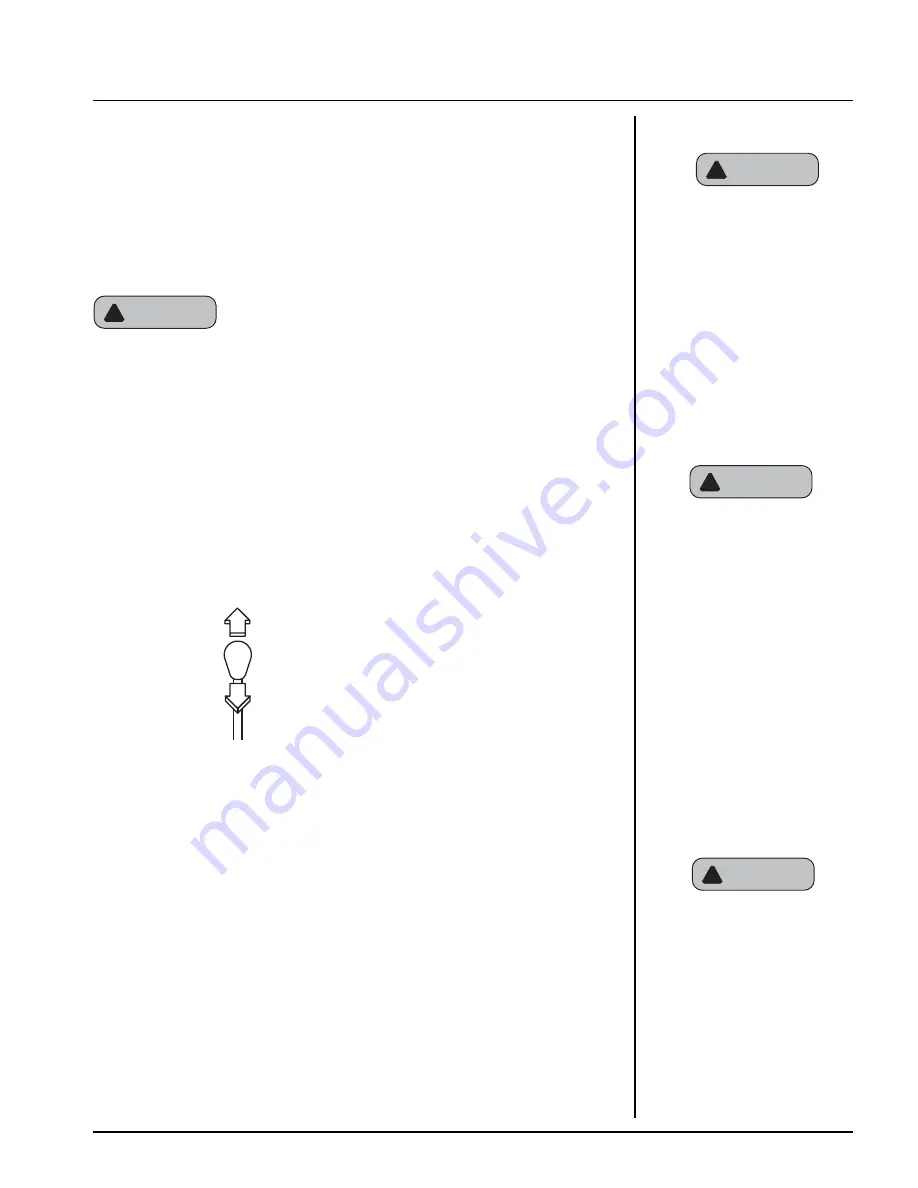
Form No. 20027 • G6-42P Owner/Operator Manual
14.5
Boom Head-Mounted Winch
Capacity:
The boom head-mounted winch maximum load capacity is shown on the standard
carriage capacity chart. However, maximum capacity may be used only in areas
where it does not exceed capacities shown on standard carriage/fork capacity
chart (located on dashboard). Also note that maximum winch capacity is less
than carriage/fork maximum capacity. Capacity rating is based on load being
lifted and suspended vertically from the boom and with no load on forks.
A side load or a swinging load could cause the handler to tip over and/
or damage the boom.
Observe the following Special Precautions:
• Never drag the load; lift vertically.
• Use tag line to guide and steady a suspended load. Tag lines must be long
enough to keep helpers clear of load and handler.
• Beware of wind. Wind can cause a suspended load to swing and cause
dangerous side loads - even with tag lines.
• Start, travel, turn and stop slowly to prevent load from swinging.
• Weight of all rigging (slings, etc.) must be included as part of load.
• Do not attempt to use handler frame-leveling to compensate for load swing.
Attachment Tilt Controls:
Figure 14-6
The auxiliary control lever is used to control
the boom head-mounted winch. Pull the
lever back to raise winch load; push the
lever forward to lower winch load.
Installation Procedure:
1. Install winch on boom head and connect hydraulic hoses at winch motor.
2. Position winch hook directly above balance point of load and secure using
appropriate rigging.
Operation:
• Attach tag lines to load and transport load to delivery site.
• While helpers guide load with tag lines, position load at delivery point.
Truss Boom & Truss Boom with Winch
Capacity:
Maximum capacity for the truss boom (with or without winch) is shown on
attachment serial number plate. However, maximum lift capacity applies only
to certain areas within boom extension/elevation pattern of handler/truss boom
combination. A separate capacity chart must be used for handlers equipped
with truss boom. Study and understand this chart before attempting to handle
a load with truss boom.
WARNING
!
Do not handle a load with Boom
Head-Mounted Winch attachment
until you study & understand the
“Boom Head-Mounted Winch
Capacity Chart”. If your handler
does not have a “ Boom Head-
Mounted Winch Capacity Chart”,
ask your supervisor to get one
before using the attachment.
WARNING
!
PRECAUTIONS
• Maximum winch load capacity
is reduced from normal
carriage/fork load rating.
• Always level handler before
lifting a load.
See Page 12.0
• Travel with load and boom
lowered to travel position
(load approximately one foot
above the ground).
• Always lower load to rest
before leaving handler.
WARNING
!
WARNING
!
PRECAUTIONS
• Because the truss boom
extends the reach of the
handler, maximum load
capacity is reduced.
• Because of extended reach, it
is especially important to level
the handler before lifting a
load.
See Page 12.0
• Travel with load and boom
lowered to travel position
(load approximately one foot
above ground).
• Always lower load to rest
before leaving handler.
AUXILIARY
CONTROL LEVER
LOWER
WINCH
LOAD
RAISE
WINCH
LOAD


































